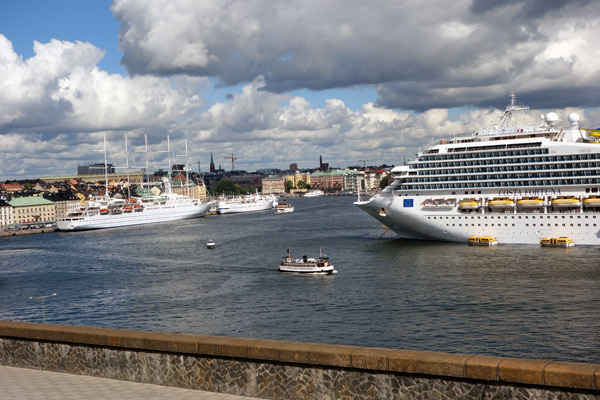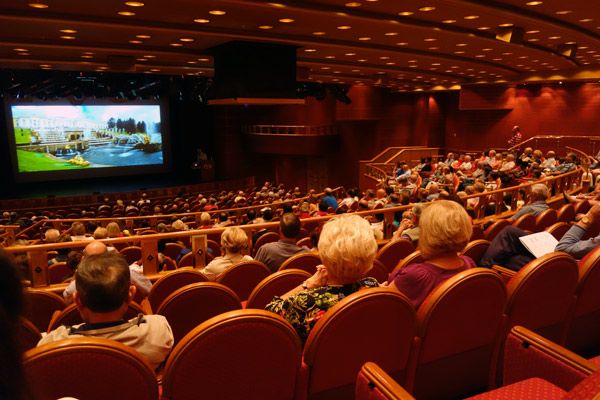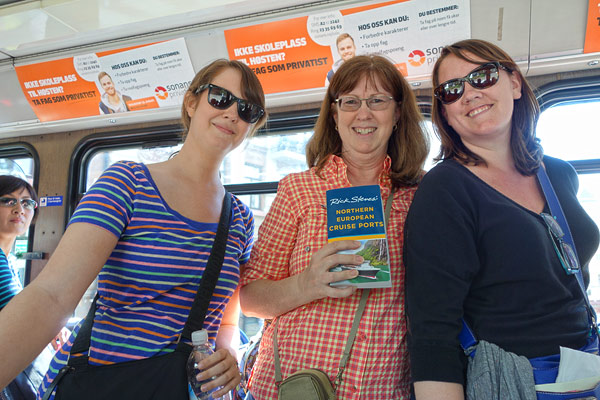I’m having a great time in Stockholm — biking around the city, placing a call from my own private telephone, and bumping into one of those Rick Steves tour groups.
 Stockholm is one of Europe’s most beautiful cities — and it’s like none other for joyriding on a bike. Bike paths are a city-planning priority, and they run along the entire harbor. And parklike islands are biking utopias. Djurgården (“Animal Garden”) was the king’s private hunting preserve. Today it’s a vast park dotted with fun sights. I’d make a point to bike in the early evening, when lots of people are out, the light is warm, and colors pop. Getting a bike is cheap and easy in Stockholm (there’s a good rental place and a welcoming info center with good biking maps right next to the bridge that connects Djurgården to the rest of the city).
Stockholm is one of Europe’s most beautiful cities — and it’s like none other for joyriding on a bike. Bike paths are a city-planning priority, and they run along the entire harbor. And parklike islands are biking utopias. Djurgården (“Animal Garden”) was the king’s private hunting preserve. Today it’s a vast park dotted with fun sights. I’d make a point to bike in the early evening, when lots of people are out, the light is warm, and colors pop. Getting a bike is cheap and easy in Stockholm (there’s a good rental place and a welcoming info center with good biking maps right next to the bridge that connects Djurgården to the rest of the city).
 While almost no one ever uses my phone these days, every time I’m in Stockholm, I drop by the cathedral in the Old Town (Gamla Stan) just to hear the friendly dial tone on Riks telefon.
While almost no one ever uses my phone these days, every time I’m in Stockholm, I drop by the cathedral in the Old Town (Gamla Stan) just to hear the friendly dial tone on Riks telefon.
 While in Sweden, I bumped into one of our happy tour groups. Scandinavia is Europe’s most expensive region, so it’s our challenge to be sure this particular itinerary is as good a value as possible. And, of our 35 different Rick Steves tour routes, Scandinavia is selling really well this year. As a Norwegian myself, I’m particularly happy that we have a new guide — Pål Johansen, our first from Norway — who’s getting rave reviews. The entire group thought we looked like cousins, which — in a Viking sort of way — we are. Can you spot Pål in this photo?
While in Sweden, I bumped into one of our happy tour groups. Scandinavia is Europe’s most expensive region, so it’s our challenge to be sure this particular itinerary is as good a value as possible. And, of our 35 different Rick Steves tour routes, Scandinavia is selling really well this year. As a Norwegian myself, I’m particularly happy that we have a new guide — Pål Johansen, our first from Norway — who’s getting rave reviews. The entire group thought we looked like cousins, which — in a Viking sort of way — we are. Can you spot Pål in this photo?






